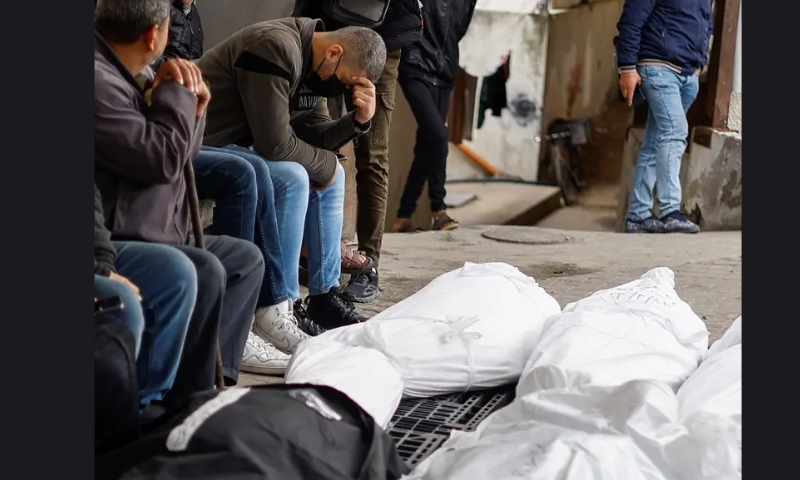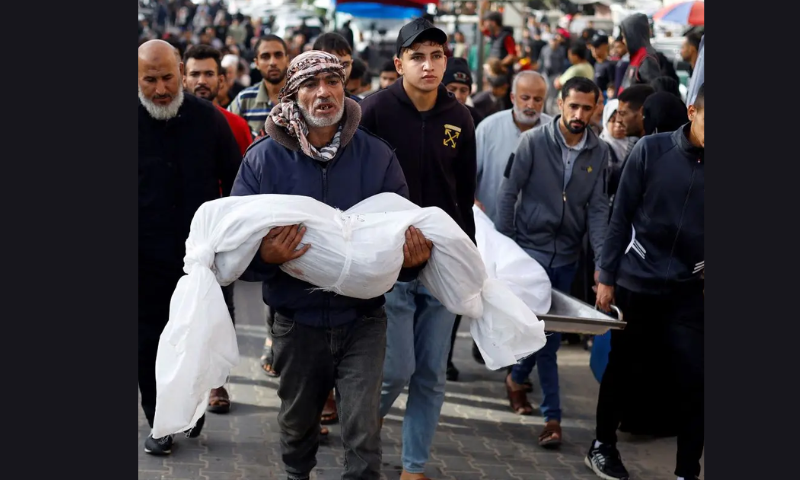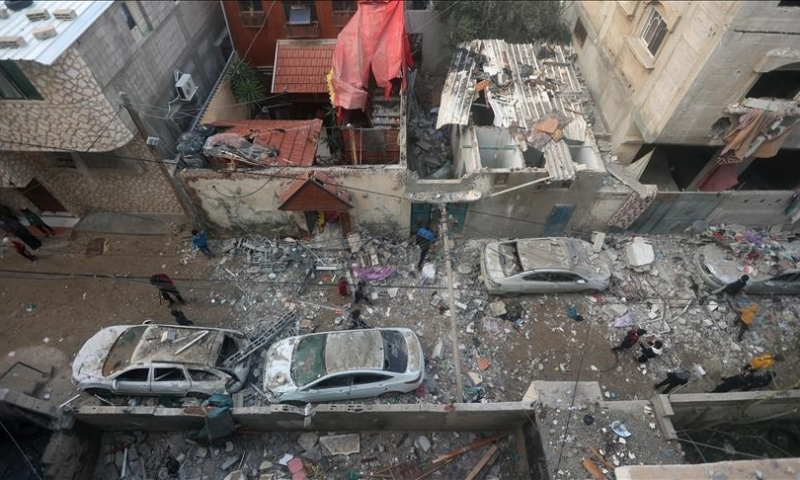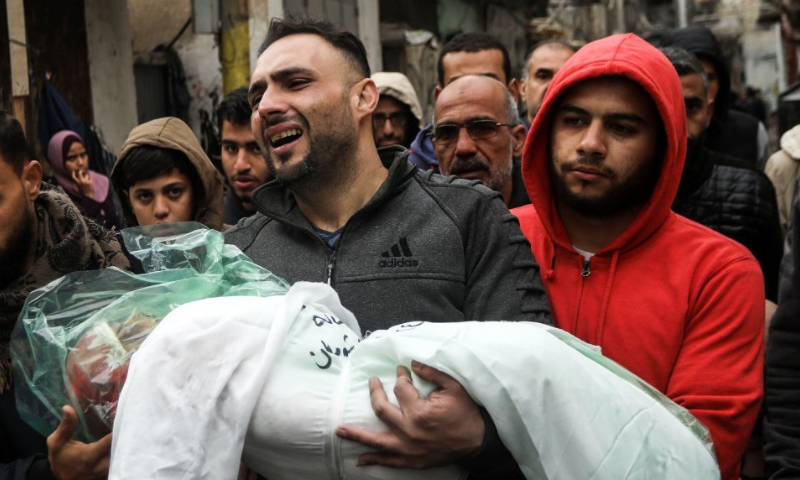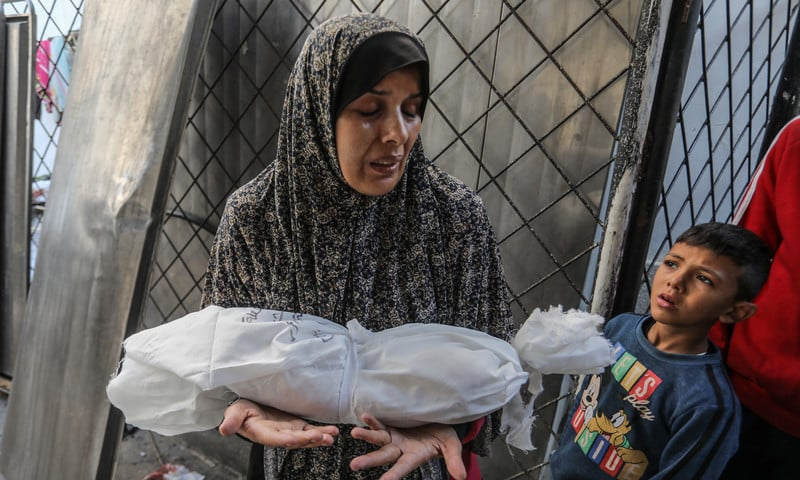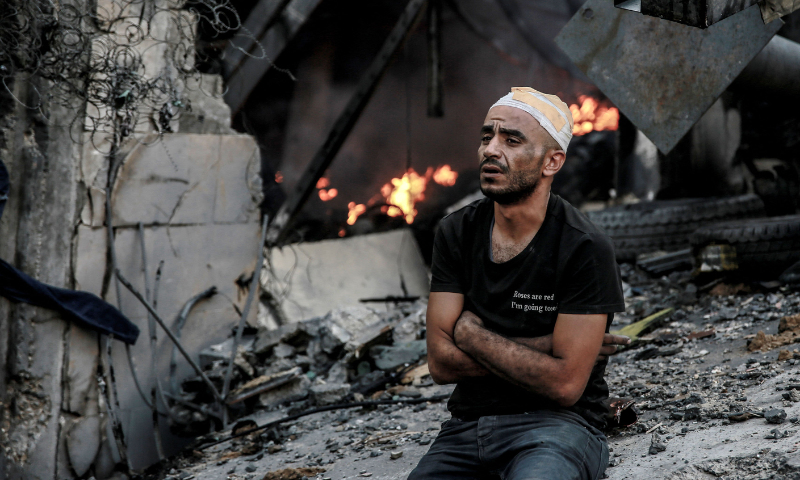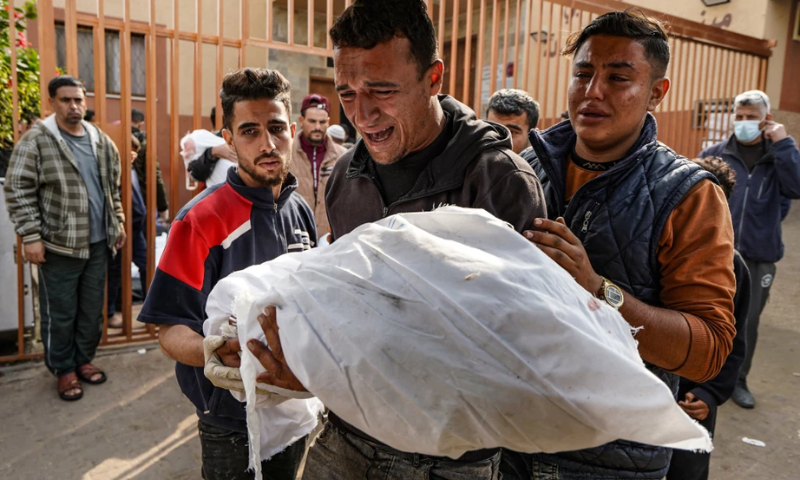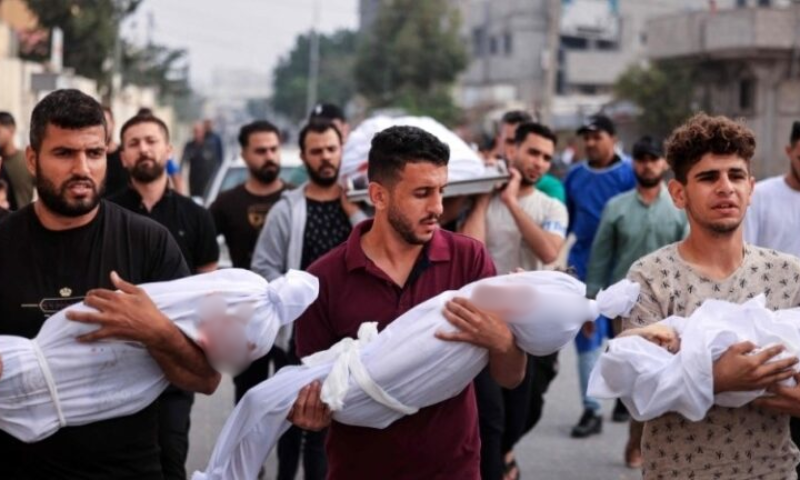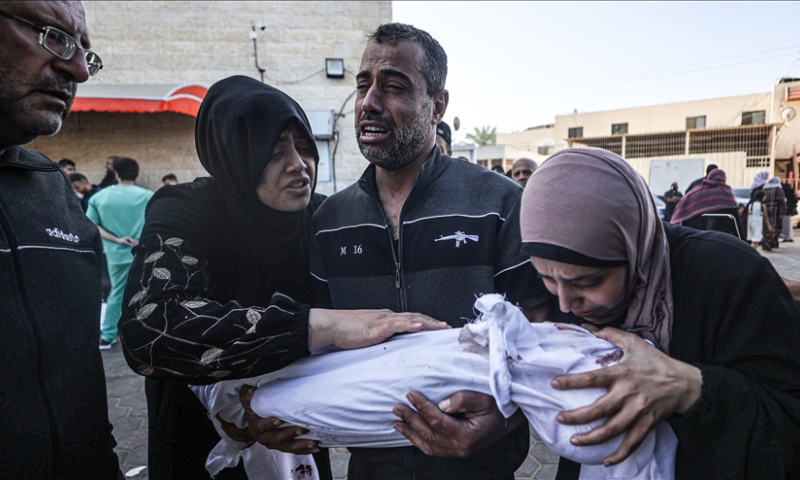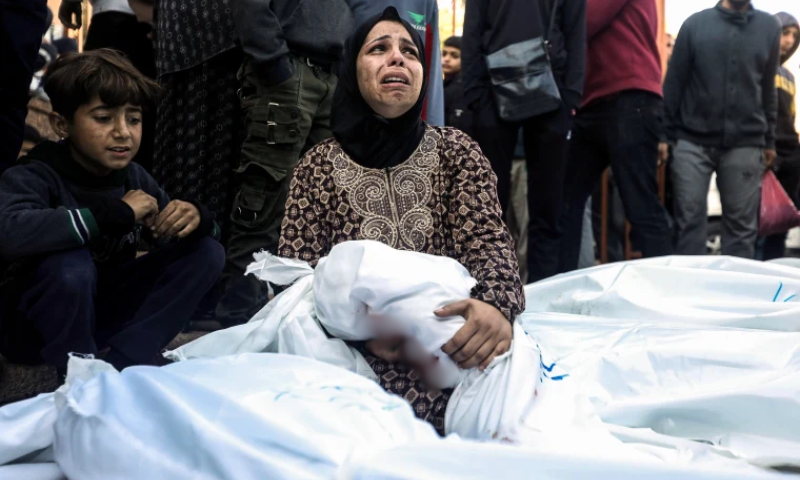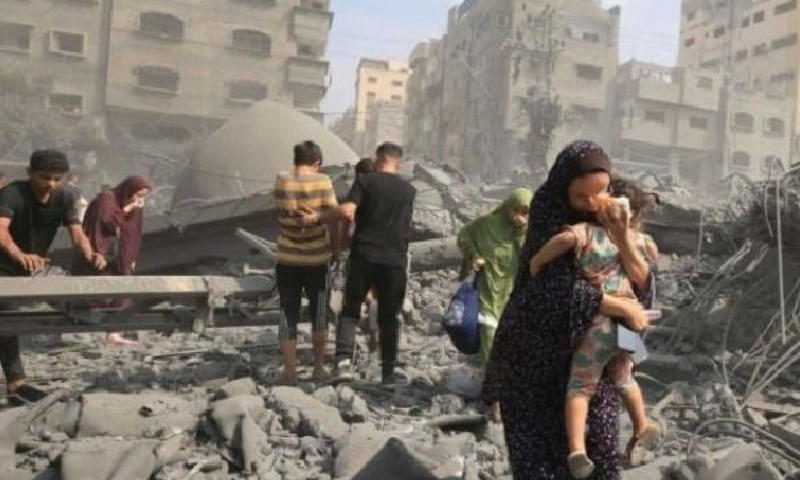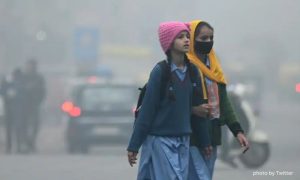GAZA CITY: The health ministry in the Gaza Strip said on Monday at least 38,664 Palestinians, mostly women and children, have been killed in the ongoing Israeli bombardment campaign in the besieged territory since October 7 last year.
The toll includes 80 deaths in the past 24 hours, a ministry statement said, adding that 89,097 people have been injured in the Gaza Strip since October 7.
The latest casualty figures include an update on the Israeli airstrike on the Abu Araban school in central Gaza, operated by the UN agency for Palestinian refugees, UNRWA. Initially reporting 15 deaths, the toll has now risen to 22, highlighting the peril faced by thousands of displaced Palestinian civilians seeking shelter from Israeli bombardment in educational facilities turned battlegrounds.
It was the fifth Israeli strike on a school being used to shelter displaced Palestinians from Israeli attacks in eight days.
Meanwhile, Israel hammered the Gaza Strip from the air, sea and land on Monday as the war in the Palestinian territory showed no sign of abating, with Hamas saying it was pulling out of truce talks due to Israel’s sabotage tactics.
Neighborhoods in Gaza City such as Tal Al-Hawa, Sheikh Ajlin, and Al-Sabra have borne the brunt of shelling, while other areas like Al-Mughraqa and the Nuseirat refugee camp continue to face sustained attacks, exacerbating the humanitarian crisis.
In one tragic incident, paramedics from the Palestinian Red Crescent retrieved the bodies of five persons, including three children, from the Al-Maghazi camp following Israeli airstrikes. Reports of gunship fire in Khan Younis and Apache helicopter attacks in Rafah further underscore the intensity and scope of the violence.
Efforts to negotiate a ceasefire and secure the release of hostages have stalled, with Hamas withdrawing from talks in response to continued Israeli military actions, including a strike targeting the head of a militant group’s military wing. The strike, reported to have killed 92 people, has heightened tensions and dashed hopes of a resolution to the conflict.
International mediation efforts, spearheaded by Qatar, Egypt, and with US support, have struggled to bridge the deepening divide. Despite recent optimism expressed by US President Joe Biden, who suggested progress towards a framework for peace, the situation on the ground remains dire.
Hamas’s decision to withdraw from truce talks followed an Israeli strike targeting the head of Hamas’s military wing, Mohammed Deif, which the health ministry in Gaza said killed 92 people.
Deif’s fate remains unknown, with Israeli Prime Minister Benjamin Netanyahu saying there was “no certainty” he was dead while a senior Hamas official told AFP that Deif was “well and directly overseeing” operations.
Speaking after the strike on Al-Mawasi, a second senior official from Hamas cited Israeli “massacres” and its attitude to ceasefire talks as a reason for suspending negotiations.
But according to the official, Haniyeh told international mediators Hamas was “ready to resume talks” when Israel’s government “demonstrates seriousness in reaching a ceasefire agreement and a prisoner exchange deal”.
Last week, US President Joe Biden had suggested a deal might be close, saying at a NATO summit that both sides had agreed to a framework he had set out in late May.
Hamas on Monday lashed out at the US, accusing it of supporting “genocide” by supplying Israel with “internationally banned” weapons.
Israeli bombardment and accompanying siege have devastated the Palestinian territory, destroying much of its infrastructure, leaving the majority of its 2.4 million residents displaced and causing a dire shortage of food, medicines and other basic goods.
Among the devastated facilities have been multiple schools. On Sunday, Israeli forces struck a UN-run school in Nuseirat camp that was being used as a shelter for displaced people but which the military said “served as a hideout” for militants.









